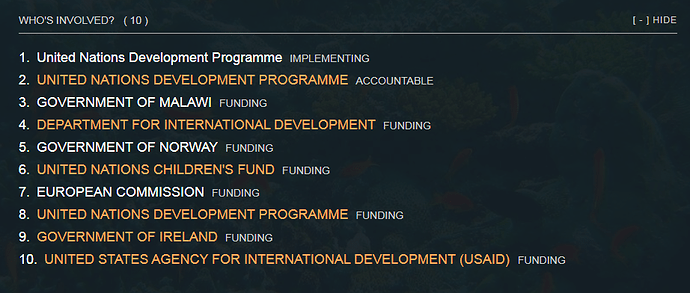Good news from Malawi. A new National Registration and Identification System has issued 9 million identity cards in the last year.
The National Registration Bureau tells us that:
The mass registration exercise shall be undertaken as a Project Unit coordinated by the United Development Programme (UNDP). The government of Malawi and Development Partners such as DFID, European Union, Ireland, Norway, United States of America and UNDP agreed to fund the project at 40 and 60 percent respectively via a UNDP Basket Fund mechanism. The total project cost is $49, 694,000. In addition, the government of Malawi is providing in-kind contribution such as transportation, security etc
What does IATI tell us? Can we get a coherent view of this activity across six publishers?
Browsing titles d-Portal will show you data from the UNDP, DFID and EC-DEVCO. With a bit more patience and digging I think I found the relevant Ireland and USA entries (but nothing from Norway).
Sectors
Searching or analysing by sector yields a massive disconnect. (It is worth noting that DAC Purpose code 13010 specifically refers to “vital registration”)
Participants
- UNDP, as the implementing agency, comes up trumps here with a list of participating organisations
- DFID includes a document link to its business case which describes the co-funding arrangement
- No other information on co-funding could be found
How can we improve?
My top tips are for all participants in co-funded activities to:
- Agree on the same, or similar,
<title> - Agree on
<sector>classifications - Use the
<related-activity>element to cross-reference all partners’ activities - Use the
<description>to explain the co-funding arrangements
The biggest challenge here is not implementing IATI, but thinking about the real world in a joined-up way.



